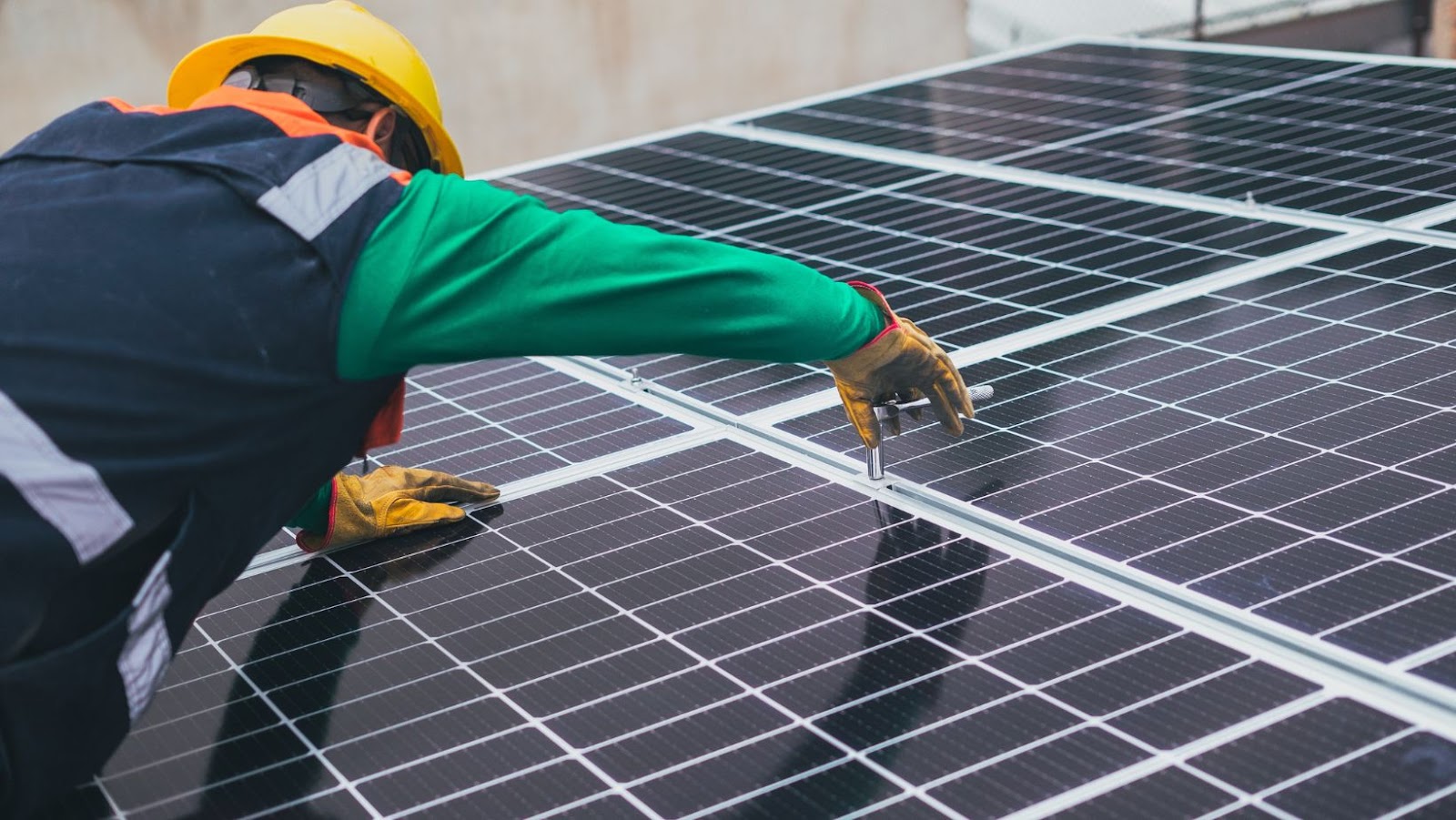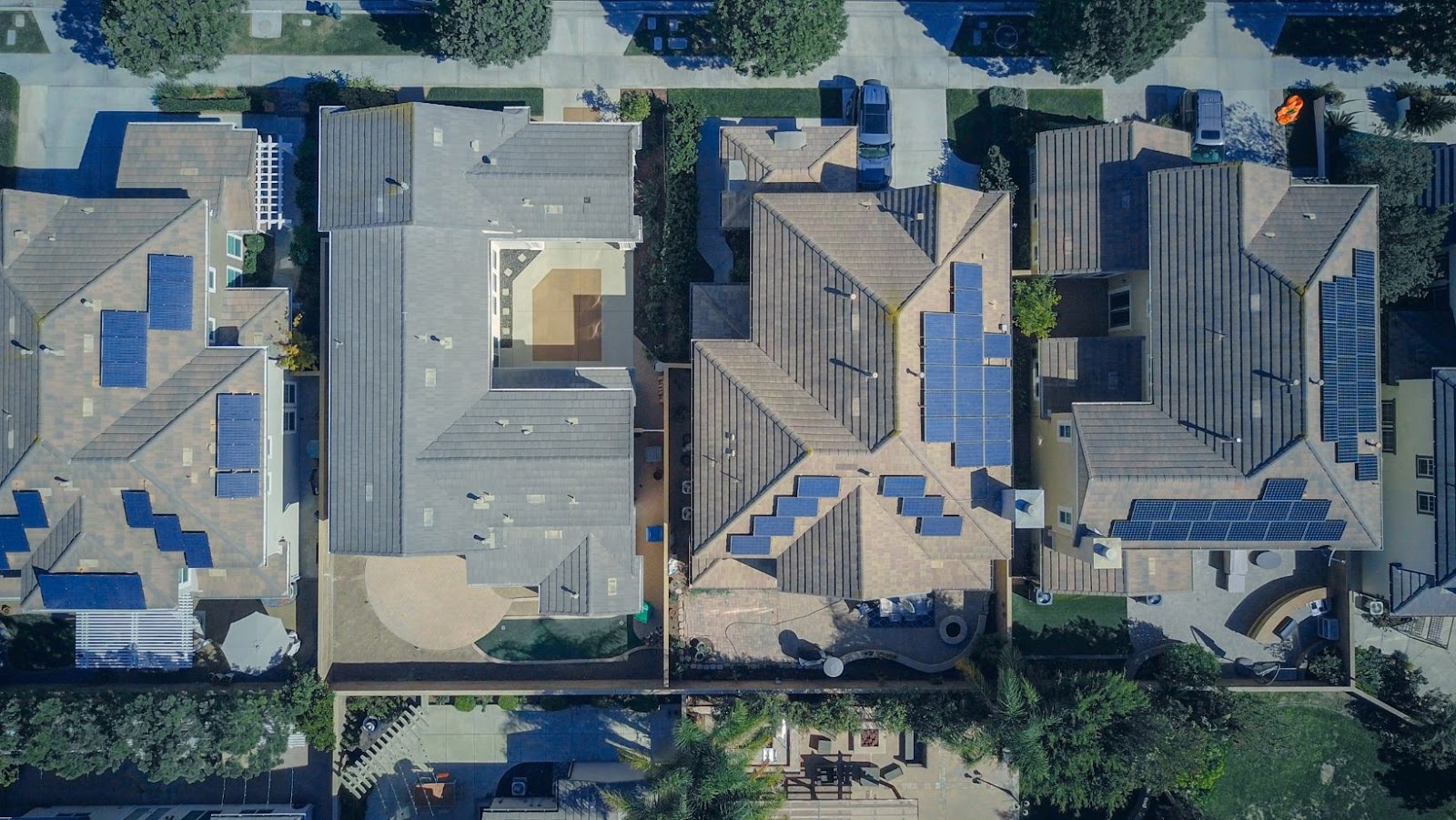Solar Panel Cost And Efficiency

The cost and efficiency of solar panels has improved significantly over the years, making them a viable option for homeowners looking to save money on energy costs and reduce their carbon footprint.
The cost of solar panels varies depending on factors such as size, manufacturer, and installation costs. On average, a 5kW solar panel system can cost between $11,000 and $14,000 after rebates and incentives. The efficiency of solar panels is measured by their conversion rate of sunlight into electricity, and currently, the industry standard is around 15-20%.
A 10 MW solar panel field can supply electricity to approximately 2000-3000 homes, depending on the level of energy consumption in those homes. While the upfront cost of installing solar panels may seem high, the long-term savings on energy bills and potential incentives and rebates can make it a worthwhile investment.
Solar Panel Basics
Solar panels are a great way to generate renewable energy and reduce your energy bills. They are made up of photovoltaic cells that convert sunlight into electricity. It’s important to understand the basic concepts of solar panel efficiency and cost before investing in them.
In this article, we’ll discuss the basics of solar panel cost and efficiency in order to help you decide if it’s the right investment for you.
The Difference Between Solar Photovoltaic and Solar Thermal Systems
Solar photovoltaic and solar thermal systems are both used to harness the energy of the sun for electricity, but they use different technology to do so.
Solar photovoltaic systems use solar panels to convert sunlight directly into electricity. These panels are made up of photovoltaic cells that are connected to an inverter, which converts the direct current (DC) power into alternating current (AC) power that can be used by your home or business.
Solar thermal systems, on the other hand, use sunlight to heat water or other fluids. This heated fluid is then used to generate steam, which powers a turbine to create electricity.
While both solar photovoltaic and solar thermal systems have their advantages and disadvantages, photovoltaic systems are typically more efficient and cost-effective for home and business use.
A 10 mg solar panel field can supply electricity to around 2,000 to 2,500 homes, depending on factors such as location, weather, and energy consumption.
Types of Solar Panels – Monocrystalline, Polycrystalline and Thin-film
There are three main types of solar panels: monocrystalline, polycrystalline, and thin-film. Each has its advantages and disadvantages in terms of cost, efficiency, and performance.
Monocrystalline panels are made from a single large crystal, which makes them highly efficient but more expensive than other types.
Polycrystalline panels are made from multiple smaller crystals, which reduce the efficiency but also lower the cost.
Thin-film panels are lightweight, flexible, and easy to install, but they are less efficient and have a shorter lifespan.
In terms of the number of houses a 10 MW solar panel field can supply, it depends on various factors such as location, weather conditions, and energy consumption. On average, a 10 MW solar panel field in the US can power around 1,500 to 2,500 homes annually. However, this is just an estimate, and the actual number of houses that a solar panel field can supply may vary.
Pros and Cons of Different Types of Solar Panels
There are various types of solar panels available in the market each with its pros and cons. While selecting a solar panel for your home, it is essential to be well-informed of the various options available to make an informed decision.
Here are some pros and cons to consider while choosing the solar panel type:
Monocrystalline: Monocrystalline solar panels are efficient and can produce high yields, even in limited spaces. They are also aesthetically pleasing. However, they are more expensive and might not perform well in high temperatures or shading conditions.
Polycrystalline: Polycrystalline solar panels are more affordable, making them a popular option among homeowners. They work well in sunny conditions but might not perform well in low light conditions. They also take up more space, making them unsuitable for smaller roofs or areas.
Thin film: Thin-film solar panels are flexible and lightweight, making them easy to install. They also perform better in low light conditions and high temperatures. However, they are less efficient and require more space for installation.
Pro tip: To determine how many houses a 10 mg solar panel field will supply, you need to know the solar panel’s total watts and divide it by the average energy consumption per household per day.
Factors Affecting Solar Panel Efficiency
Solar panel efficiency is a crucial factor that determines the number of houses that a 10 megawatt solar panel field can supply. There are a number of factors that can have a direct impact on the efficiency of a solar panel system. These include the quality of the products used, the location in which the system is installed, and the weather conditions.
To get a better understanding of the factors affecting solar panel efficiency, let’s explore them further.
Solar Panel Orientation
Solar panel orientation is a critical factor that affects the efficiency of your solar panel system. Proper solar panel orientation can maximize your system’s energy output and reduce its payback time.
Here are the factors to consider when setting the orientation for your solar panels:
Geographic location: Depending on your latitude and longitude, the optimal direction for solar panels can differ. In the Northern hemisphere, it is recommended to face solar panels southward to maximize sunlight exposure.
Roof pitch: A roof pitch between 15 and 40 degrees is considered best for solar panel installation.
Shading: Keep your solar panels free from shading by trimming nearby trees and vegetation.
Solar panel efficiency: The more efficient the solar panel, the less space it needs to generate the same amount of power. It is also important to compare solar panel cost and efficiency before making a purchasing decision.
For instance, a 10MW solar field can supply enough energy to power up to 3,000 average homes. Therefore, it is crucial to install solar panels with optimal orientation to maximize their efficiency and reduce the cost of the entire system.
Solar Panel Tilt Angle
The Solar Panel Tilt Angle is an important factor that affects the efficiency of the solar panel. It refers to the angle at which the solar panel should be installed to receive maximum sunlight and produce maximum power output.
Factors affecting the Solar Panel Tilt angle include the latitude of the location, the season of the year, and the time of day. To determine the Solar Panel Tilt Angle for your location, use an online solar panel tilt angle calculator or consult a solar panel installation expert.
Another factor affecting the efficiency of the solar panel is the cost of the solar panel. While solar panels can be expensive, their cost is reducing every year, and they are becoming more efficient.
A 10 MG solar panel field can supply about 2,000 houses with electricity. This number depends on different factors such as solar panel efficiency, location, weather, and energy consumption patterns.
Weather Conditions and Climate
Weather conditions and climate are two of the most significant factors affecting the efficiency of solar panels. Hot temperatures can cause solar panels to produce less energy, while cold temperatures can increase their efficiency. Air pollution and shading from trees, buildings, or other obstructions can also significantly affect energy production.
The cost of solar panels and their efficiency are two of the most important considerations for solar energy systems. The efficiency of solar panels is determined by their ability to convert solar energy into electricity. The cost of solar panels has decreased significantly over the years, allowing more households to afford them.
A 10 MW solar panel field can produce enough energy to power roughly 2,500 homes. However, the exact number of homes that can be supplied by a 10 MW solar panel field depends on several factors, including the location of the panels, weather conditions, and the time of day.
How to Calculate Solar Panel Efficiency
The energy efficiency of solar panels is one of the most important factors in deciding how many homes a 10 mg solar panel field could supply. Many factors can influence the efficiency of a solar panel such as its type, size, and angle of installation.

In order to accurately calculate the efficiency of a solar panel, it’s important to understand the different components and factors that contribute to it. Let’s take a look at the different components and how they affect the efficiency of a solar panel.
Understanding Peak Sunlight Hours
Peak sunlight hours are the hours in a day during which the sun’s energy is most available and can be harnessed most effectively by solar panels. These hours are typically defined as the hours of the day during which the sun is high enough in the sky to provide full sunlight, and are typically estimated to be around 5 hours per day in most locations.
To calculate solar panel efficiency, you need to determine the amount of electricity produced by the solar panels per peak sunlight hour. This can be measured in kilowatts per peak sunlight hour (kWp). The higher the kWp, the more energy the solar panels will produce in a day.
When it comes to determining how many houses a 10 MWp (megawatt-peak) solar panel field can supply, the answer can vary depending on a number of factors, such as the energy consumption of the houses, the efficiency of the solar panels, and the number of peak sunlight hours per day in the region. In general, a 10 MWp solar panel field can supply enough electricity to power approximately 2,000 homes for a day.
Pro Tip: To maximize the efficiency and output of your solar panels, it’s important to regularly clean and maintain them to ensure they are free of dirt, debris, and shading. Additionally, investing in high-efficiency solar panels and using energy-efficient appliances and light bulbs can help to reduce your overall energy consumption and save you money on your energy bills.
How to Calculate the Solar Panel’s Wattage
Calculating the wattage of a solar panel is a critical step in determining the efficiency and cost-effectiveness of a solar panel system. Here’s how to do it:
First, determine the size of the solar array, which is the total number of solar panels you plan to install.
Second, find the wattage rating of each solar panel. You can usually find this information on the manufacturer’s website or the panel’s packaging.
Third, multiply the wattage rating by the number of panels in your solar array. For example, if you have ten 250-watt solar panels, your system’s total wattage would be 2500 watts, or 2.5 kilowatts.
To calculate solar panel efficiency, divide the system’s total wattage by the size of your solar array in square feet. Solar panel efficiency varies based on factors such as panel type, climate, and shading conditions.
Finally, to determine how many houses a 10 MW solar panel field will supply, divide the total wattage of the solar panel field by the average annual energy consumption of a household in your region. This number will vary depending on the region, but the average annual household energy consumption in the US is around 10,000 kWh.
How to Calculate the Solar Panels’ Energy Output
Calculating the energy output of your solar panels is essential for estimating the power supply capacity and the cost of the project. The energy output of a solar panel is a result of several factors such as solar panel efficiency, temperature, shading, and light intensity.
Here are the steps to calculate the energy output of your solar panels:
1. Determine and note the solar panel’s wattage rating.
2. Measure the solar panel’s current under standard test conditions (STC), which is commonly 1000 watts per square meter of sunlight with a cell temperature of 25°C.
3. Multiply the solar panel’s voltage by the measured current (in amps) to calculate the power rating (in watts).
4. Calculate the energy output per day by multiplying the power rating by the number of hours of sunlight.
The energy output will help you determine how many solar panels you need to power your home and the cost of the project. A 10 MW solar panel field can supply electricity for around 2000 homes.
Factors Affecting Solar Panel Cost
When it comes to solar panels, it is important to consider the cost of installation and maintenance of the system. The cost of a solar panel can range from a few hundred to several thousand dollars, depending on the size and complexity of the system.
Factors such as the size of the installation, materials used, labor costs, and the efficiency of the system all impact the overall cost of solar panel installation. Let’s explore some of these factors in more depth.
Type of Solar Panel
When it comes to solar panels, there are three main types- Monocrystalline, Polycrystalline, and Thin-film. Each type has different features and costs associated with it.
Monocrystalline solar panels are the most efficient and long-lasting, making them the most expensive. These panels are made from pure silicon, which is why they have a uniform look and high durability. Monocrystalline solar panels have an efficiency rate of up to 20%.
Polycrystalline solar panels are less expensive than monocrystalline panels and have an efficiency rate of up to 17%. These panels are made from multi-crystalline silicon and have a speckled blue color.
Thin-film solar panels are the least expensive and least efficient option. These panels are made from a layer of photovoltaic material on a flexible surface, which makes them lightweight and easy to install. However, thin-film solar panels have an efficiency rate of only up to 11%.
Factors affecting the cost of solar panels include the type of panel, the installation cost, and the quality of the panels being used. The cost of a 10 MW solar panel field can supply power to approximately 2,500-5,000 homes depending upon the electricity requirement and the local weather patterns.
Pro Tip: Consider investing in high-efficiency solar panels to get a better return on your investment in the long run.
Solar Panel Brand/Manufacturer
The solar panel industry has become increasingly popular in recent years, with numerous brands and manufacturers seeking to get a share of the market. Some of the top brands/manufacturers in the market include SunPower, LG, and Panasonic.
Factors affecting solar panel cost include the brand, efficiency, size, and quality of materials used. The cost of a solar panel system for an average-sized home can range from $14,000 to $20,000, depending on the aforementioned factors.
The efficiency of a solar panel refers to the amount of sunlight converted into electricity. The higher the efficiency, the less surface area required to produce the same amount of power. A 10 mg solar panel field can supply up to 2,500 homes if it is built in an area with sufficient sunlight throughout the year. It is important to note that the cost of installation and maintenance will affect the overall cost and efficiency of the solar system.
Installation and Labor Costs
The cost of solar panel installations includes both the cost of the panels themselves and the labor involved in their installation. Factors that affect the cost of solar panel installations include the size and efficiency of the panels, the type of panels selected, and the complexity of the installation process.
The cost of solar panels varies depending on the size of the system and the amount of energy it can produce. For instance, a 10 MW solar panel field can supply energy to more than 2,000 homes, while a smaller system may only power a single home.
The cost of labor can also vary widely depending on the complexity of the installation, the level of expertise required by the installer, and the geographic location of the installation. In general, labor costs for solar panel installations are higher in areas with high labor costs or where the installation is particularly complex.
Pro tip: To get the most out of your solar panel investment, consider choosing a high-efficiency system that is optimized for your geographic location and energy usage needs. This will help ensure that your system produces the maximum amount of energy possible, ultimately reducing your long-term energy costs.
How Many Houses Will a 10 mg Solar Panel Field Supply
Solar energy is becoming increasingly popular for generating electricity for homes and businesses around the world. One way to generate solar electricity is through solar panel fields. This article will focus on how many houses can be powered by a 10 megawatt solar panel field.

We will discuss the cost, efficiency, and other factors involved in determining the number of homes this field can provide with electricity.
Estimating Energy Output of a Solar System
The energy output of a solar system depends on several factors, including the size of the solar panel field, the solar panel efficiency, and the average sunlight in the area. Estimating the energy output of a solar system can help determine how many houses a 10 MW solar panel field can supply.
Here’s how to estimate the energy output of a solar system:
Calculate the wattage per solar panel: Most solar panels generate between 250-400 watts per panel, depending on their efficiency.
Calculate the total wattage of the solar panel field: A 10 MW solar panel field consists of approximately 40,000 solar panels. For example, if each panel generates 300 watts, the 10 MW solar panel field would generate 12,000,000 watts or 12,000 kilowatts (kW) of energy.
Determine energy usage per household: On average, a household uses approximately 10,000-15,000 kWh per year or about 900-1250 kWh per month.
Determine the number of homes the solar panel field can power: Dividing the total energy output of the solar panel field by the energy used by a house will give you a rough estimate of how many homes the field can power. For instance, a 10 MW solar panel field generating 12,000 kWh of energy could power approximately 800-1200 homes per year, depending on energy usage patterns.
Pro tip: Considering energy-efficient measures in homes can help reduce overall energy usage and increase the number of households a 10 MW solar panel can supply.
Factors Affecting Solar Panel Output
The output of solar panels is influenced by several factors, which can affect the efficiency and performance of the solar panel system.
Some of the key factors affecting solar panel output are:
1. Sunlight intensity and duration: The amount of sunlight available, its intensity, and duration of exposure all play a vital role in determining the solar panel’s output.
2. Temperature: High temperatures can cause the solar panels to lose efficiency and generate less power.
3. Shading: Obstructions such as trees, buildings, or other objects that block sunlight from reaching solar panels can lower their output.
4. Orientation and Angle: The orientation and angle of the solar panel can significantly impact the amount of sunlight received by the panel and thus its output.
A 10 MW solar panel field can supply power to around 2000 houses, assuming an average of 5 kWh per house per day. Solar panel efficiency and cost-effectiveness have been improving over the years, and over time, solar energy is expected to become an even more viable and attractive option for powering homes and businesses.
Energy Consumption of an Average Household
The average household in the United States consumes 877 kWh of electricity per month, which equates to an annual usage of 10,572 kWh. However, this number can vary depending on household size, location, and energy-efficient habits.
A 10 MW solar panel field, which contains approximately 40,000 solar panels and covers 65 acres of land can power up to 2,000-3,000 homes per year, assuming that each household uses an average of 10,572 kWh per year.
The cost and efficiency of solar panels have improved significantly in recent years. The cost of a solar panel has dropped by more than 60% over the last decade, making solar energy more accessible and affordable for households. On average, a solar panel with an efficiency rating of 20% can produce about 265 watts of power.
Going solar not only helps reduce your electricity bills but also makes a positive impact on the environment. It’s a smart investment that pays off in the long run.
Pro-tip: Before installing solar panels, it’s essential to assess your energy needs and consumption patterns to determine the optimal size and number of panels needed to power your household.

 The Benefits Of Outdoor Sofa Deep Seating
The Benefits Of Outdoor Sofa Deep Seating  This Method has Been Used for Centuries
This Method has Been Used for Centuries  The Different Types of Bonds
The Different Types of Bonds  The Most Comfortable Deep Seating Outdoor Furniture
The Most Comfortable Deep Seating Outdoor Furniture  Maintaining Your Glass Cabinet Doors
Maintaining Your Glass Cabinet Doors  The Benefits Of Buying Cabinet Doors
The Benefits Of Buying Cabinet Doors